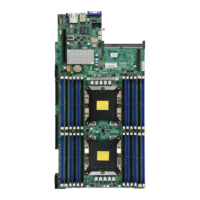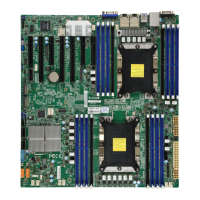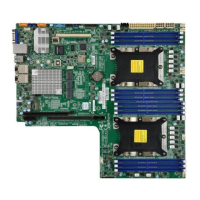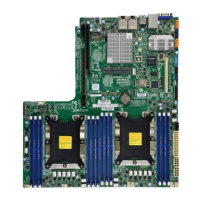Chapter 4: UEFI BIOS
85
• Number of IIO
• Current UPI Link Speed
• Current UPI Link Frequency
• UPI Global MMIO Low Base/Limit
• UPI Global MMIO High Base/Limit
• UPI Pci-e Conguration Base/Size
Degrade Precedence
Select Topology Precedence to degrade features if system options are in conict. Select
Feature Precedence to degrade topology if system options are in conict. The options
are Topology Precedence and Feature Precedence.
Link L0p Enable
Select Enable for the QPI to enter the L0p state for power saving. The options are Dis-
able, Enable, and Auto.
Link L1 Enable
Select Enable for the QPI to enter the L1 state for power saving. The options are Dis-
able, Enable, and Auto.
IO Directory Cache (IODC)
Use this feature to enable the IO Directory Cache (IODC) support. The options are Dis-
able, Auto, Enable for Remote InvItoM Hybrid Push, InvItoM AllocFlow, Enable for Re-
mote InvItoM Hybrid AllocNonAlloc, and Enable for Remote InvItoM and Remote WViLF.
Isoc Mode
Select Enable to enable Isochronous support to meet QoS (Quality of Service) require-
ments. This feature is especially important for Virtualization Technology. The options are
Disable, Enable, and Auto.
Memory Conguration
Integrated Memory Controller (iMC)
Enforce POR
Select Enable to enforce POR restrictions on DDR4 frequency and voltage programming.
The options are POR and Disable.
PPR Type
Post Package Repair (PPR) is a new feature available for the DDR4 Technology. PPR
provides additional spare capacity within a DDR4 DRAM module that is used to replace
faulty cell areas detected during system boot. PPR oers two types of memory repairs.
Soft Post Package Repair (sPPR) provides a quick, temporary x on a raw element in a
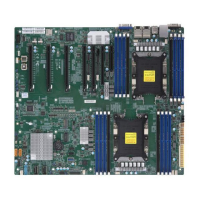
